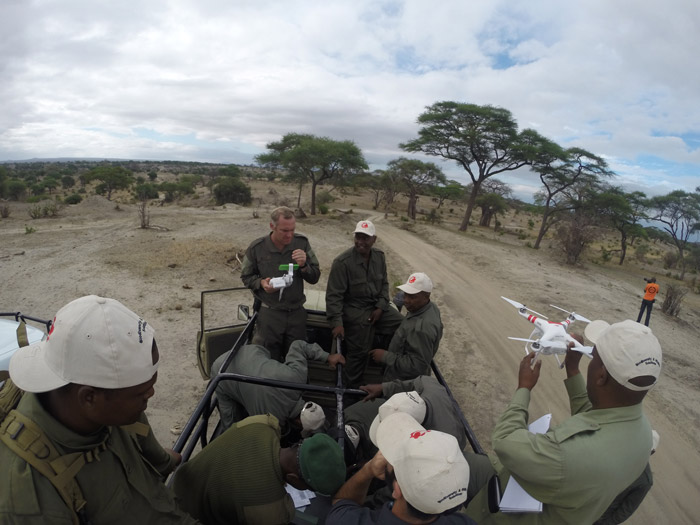It happens in seconds. Tusks turn towards the sky, and the 5-ton elephant stops, scuttles backwards, flaps its ears, turns around… and runs in the opposite direction. The reason? Drones. Written by: Christina Goldbaum

“People think the drones work because they sound like bees,” says conservation biologist David Olson, noting that bees are a nuisance to elephants. “And the drones are like the mother of all Tsetse flies.”
Olson and his team at the conservation organisation RESOLVE and the Tanzania Wildlife Research Institute have been experimenting with the ability of small drones to herd elephants out of farms and into protected areas in Tanzania. The goal is to reduce human-elephant conflict (HEC), the decade-old struggle between farmers trying to grow crops and elephants scavenging for a meal. Unable to effectively discourage the elephants, farmers have begun resorting to extreme measures, including killing the animals with poisoned watermelons and arrows to save their crops.
The project is being tested this month in Tarangire National Park as crops are harvested and the height of elephant raiding season begins. Community scouts patrol the surrounding farms each night, calling in rangers armed with drones when they spot an elephant crossing into farmland.
And so far, the test results are clear: drones work.
“Elephants react in thirty seconds, and it only takes four minutes or less to chase the elephant off the farm,” says RESOLVE’s Jonathan Konuche, who has helped to train rangers to use drones. “And the rangers are in their vehicle at a safe distance.”

Before using drones, rangers flashed lights, made loud noises, and threw firecrackers wrapped in chilli – a substance elephants hate – to chase the animals out of farms, but the process was time-consuming and often ineffective.
When the possibility of using the aerial machines emerged, the team imagined attaching small sacks of chilli powder to the drones’ bellies, flying them over stubborn bulls, and shaking the drones to disperse chilli powder over the elephants – what they dub “chilli clouds.” But after initial tests, rangers realised that using chilli would present more problems than solutions.
“We’ve had a lot of chilli in the eye,” Konuche laughs. “But the rangers are tough.”
Chilli accidents aren’t the project’s only challenge, though. The drones are expensive (roughly US$1,100 per drone), their batteries last only twenty minutes, and their durability in tough field conditions is still uncertain.
“We can’t afford to buy six new drones yearly,” says Olson. “They need to last two to three seasons.”
Olson still hopes to scale the programme in Tanzania, where the elephant population has plummeted by 60% in the last five years, according to a new report from the Tanzanian National Parks Authority.
“We’re losing elephants fast,” Olson says. “We think these drones have a good use wherever elephants are.”
To comment on this story: Login (or sign up) to our app here - it's a troll-free safe place 🙂.![]()






